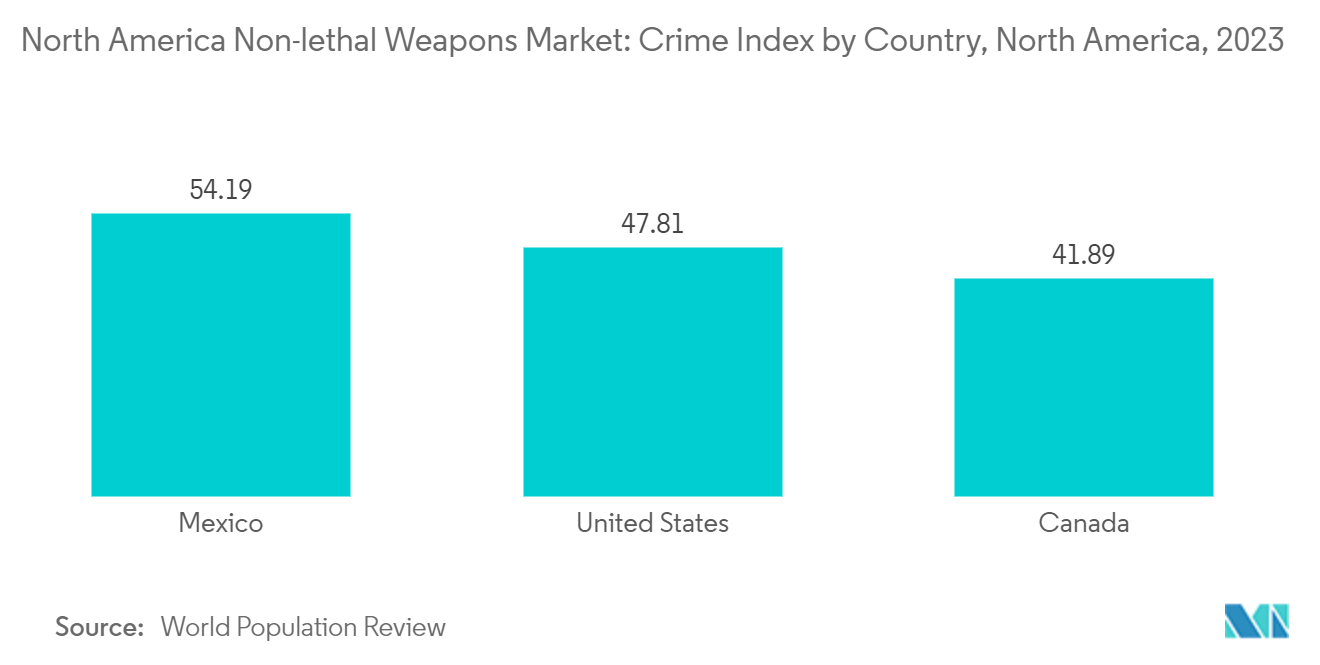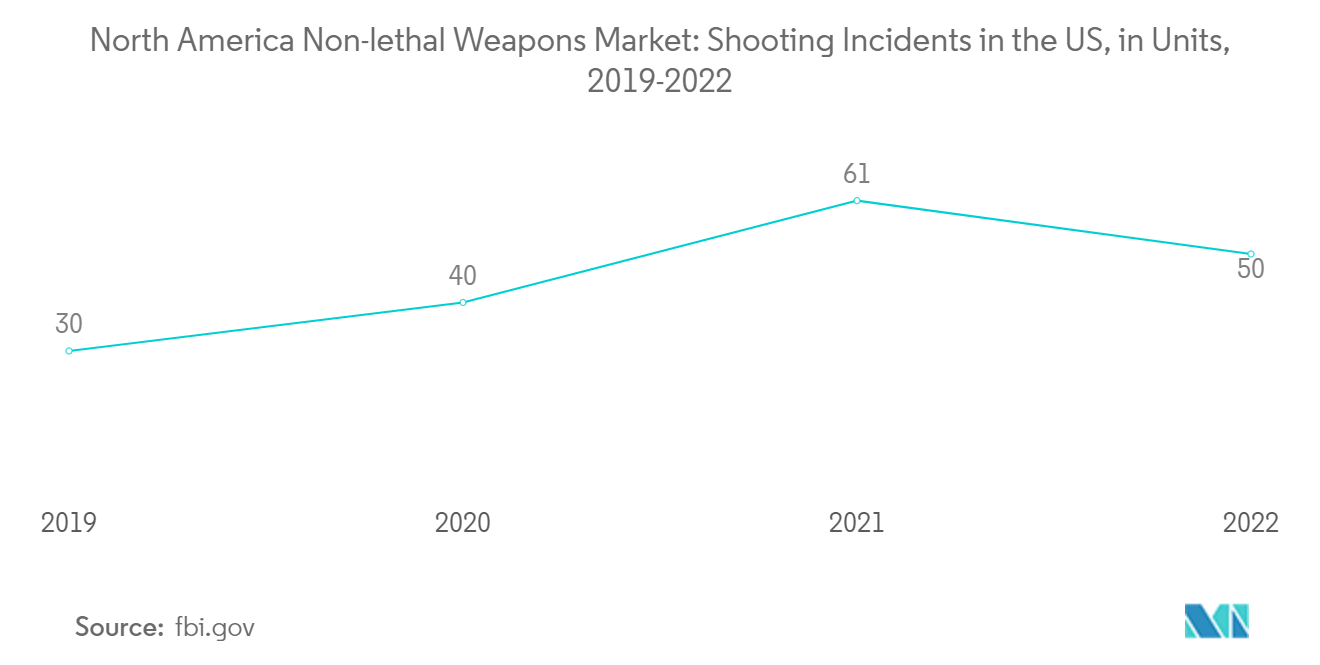Market Trends of North America Non Lethal Weapons Industry
Ammunition Segment to Register the Highest CAGR During the Forecast Period
Technological advancements in non-lethal weapon technologies are expected to increase demand for related ammunition, such as rubber bullets, bean bag rounds, and smoke munitions in the region. Non-lethal weapons, such as rubber bullets and tear gas, became standard tools for the police forces to control civilian protests. The law enforcement agencies use tactics and tools, such as handheld impact weapons (police batons, expandable batons, nunchakus), tasers and other electronic stun devices, and chemical agents, such as OC and CS, to subdue combative subjects and protect themselves and others from a potential threat. The effective use of such options requires officers to be near their opponents, which increases the risk to officers. It, thus, presents the possibility that an altercation may escalate to a point where deadly force becomes necessary.
Hence, to reduce the likelihood of such an altercation, law enforcement agencies are rapidly adopting high-impact ammunition, such as wooden dowels, foam rubber projectiles, and small bean bags, to disperse the violent crowd from a distance. For instance, in April 2021, the city of Pittsburgh requested a Formal Invitation for Bids of various less-lethal weapons for the Pittsburgh Police Force. The request included thousands of projectile beanbags, hundreds of sponge rounds, dozens of tear gas canisters, and other less-lethal weapons. Such ongoing advancements and procurements of ammunition for less-lethal weapons are expected to boost the growth of this segment.

The United States to Dominate Market Share During the Forecast Period
The North American non-lethal weapons market is driven by an increase in violence-related incidents in the US and the subsequent demand for non-lethal weapons by law enforcement agencies to contain the situation effectively. Moreover, growing issues regarding personal safety may lead to the growth of the non-lethal weapons market in the US.
Additionally, the US Department of Defence (DoD) is now focusing on developing non-lethal weapons to minimize the probability of fatalities and permanent injuries. The use of non-lethal weapons by the US Army is increasing as they are essential in places where the army cannot engage targets located or positioned such that the application of lethal, destructive fires is prohibitive or would be counter-productive to the initial goal and objective. The Joint Intermediate Force Capabilities Office is currently working on inducting a kit for the standard remotely operated weapon station (CROWS) with laser or acoustic device, production of 81 mm flashbang munition for the US Marine Corps., and millimeter-wave active denial systems, among others.
The US DoD is increasingly focused on "Gray zone" competition with other great powers, striving to deter aggression while also avoiding escalation to full-scale war. The DoD includes a variety of NLWs at its disposal, with others under development. Examples include acoustic hailers to communicate or intimidate at long ranges, eye-safe laser dazzlers that create glare, millimeter-wave emitters that cause a temporary heating sensation, and various systems that stop vehicles or vessels. Such investments of law enforcement authorities and armed forces for developing and deploying non-lethal weapons are expected to drive the growth of this market during the forecast period.

